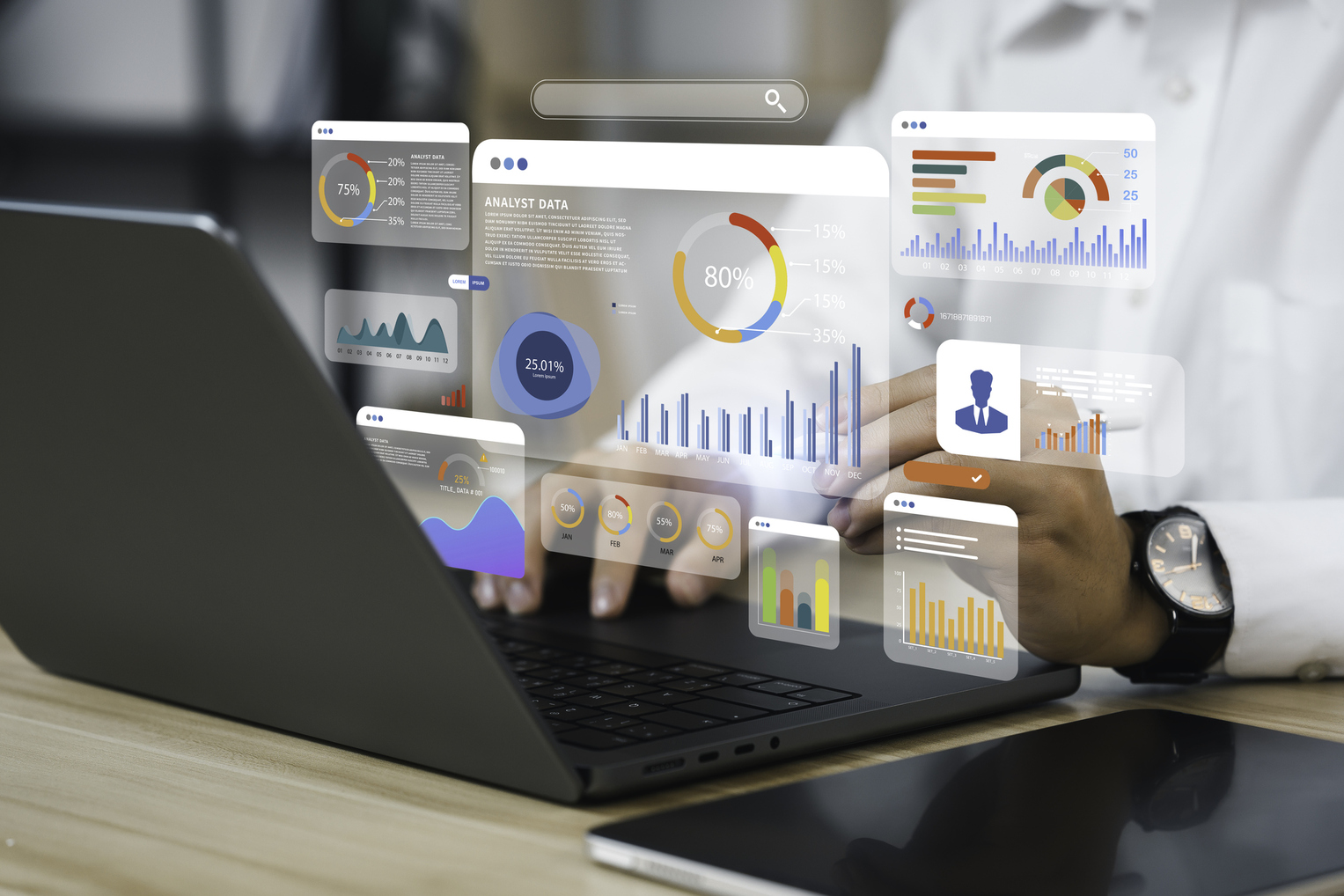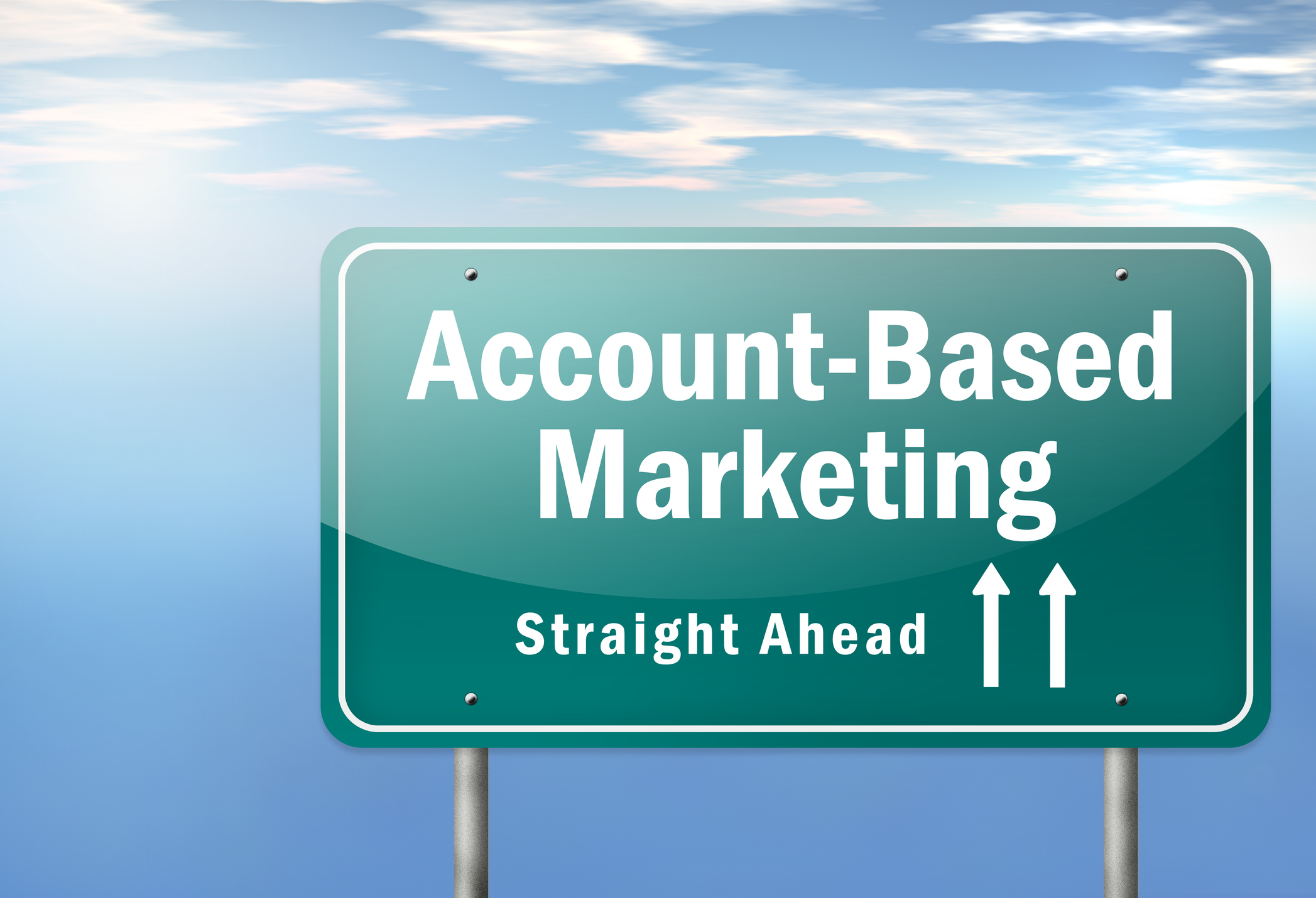The Ultimate Guide to Setting up an Account Intelligence Program in 2024
Discover how to establish a successful Account Intelligence Program that enhances your business’s strategy and growth.
Understanding Account Intelligence: What is Account Intelligence?
Account intelligence is the process of gathering, analyzing, and interpreting data about target accounts to gain insights into their needs, challenges, and buying behaviors. This information is then used to inform marketing and sales strategies, enabling them to personalize outreach, improve engagement, and ultimately close deals more effectively.
In today’s competitive landscape, marketers and sales teams need every advantage they can get to reach the right people with the right message at the right time.
An effective Account Intelligence program is a continuous process of learning and adaptation. By deeply understanding your key accounts and personalizing your approach based on strategic insights, you can build stronger relationships, identify new opportunities, and drive growth.
The key to success lies in the systematic collection, analysis, and application of account intelligence, supported by a strong alignment between your sales, marketing, and customer success teams.
By developing a deep understanding of your accounts, you can identify opportunities for growth, anticipate their needs, and build stronger relationships. Account Intelligence allows you to align your business goals with the goals of your key accounts, ultimately leading to improved customer satisfaction and long-term success.
Here’s a breakdown of the key aspects of account intelligence:
- Data-driven: It relies on collecting and analyzing data from various sources, including internal CRM systems, website analytics, market research, and third-party data providers.
- Target-account centric: It focuses on identifying and understanding high-value accounts that could become long-term customers.
- Actionable insights: The goal is to extract valuable insights from the data that can be used to guide marketing and sales strategies. This could include information such as:
-
- Key decision-makers within the target account
- The account’s current initiatives and challenges
- Their buying process and timeline
- Their budget and purchasing power
-
- Improved decision-making: By providing a deeper understanding of target accounts, account intelligence empowers businesses to make more informed decisions about their marketing and sales efforts.
Overall, account intelligence is a strategic approach to gaining a competitive edge by understanding your target audience on a deeper level.

Why is account intelligence important?
Account intelligence is important because it allows you to gain a competitive edge in today’s business landscape. By understanding the unique needs, preferences, and behaviors of your key accounts, you can tailor your strategies and offerings to meet their specific requirements.
Account intelligence enables you to identify opportunities for growth and upselling, leading to increased revenue and profitability. It also helps you anticipate customer needs and proactively address any issues or challenges they may face, ultimately enhancing customer satisfaction and loyalty.
Additionally, account intelligence allows you to build stronger relationships with your key accounts. By demonstrating a deep understanding of their business and providing personalized solutions, you can establish trust and long-term partnerships based on mutual success.
In summary, account intelligence is important because it empowers you to make informed decisions, drive business growth, and build lasting customer relationships.
Components of Account Intelligence
Account Intelligence combines two overarching types of data — first and third-party — to help you identify the most qualified accounts.
Account Intelligence does indeed leverage the power of both first-party and third-party data to provide a well-rounded understanding of your target accounts and identify the most qualified ones.
Here’s a breakdown of the two data types and how they contribute to account intelligence:
-
First-party data:
This data originates within your own organization and provides insights into your existing customer base and interactions with them. Key sources of first-party data include:
- Customer Relationship Management (CRM) systems: This stores valuable information about your past interactions with customers, including purchase history, communication records, and support tickets.
- Marketing automation platforms (MAP): These platforms offer data on website behavior, email engagement, and marketing campaign performance, revealing customer interests and preferences.
- Sales engagement platforms: They capture data on sales rep activities, interactions with prospects, and potential roadblocks encountered during the sales cycle.
-
Third-party data:
- This data is sourced from external providers who specialize in collecting and aggregating information about businesses and individuals. It can offer valuable insights beyond what you can gather internally, such as:
- Company firmographics: Industry, size, location, financial health, and other relevant company details.
- Technographics: The technology stack and software used by the target account. News and social media insights: Industry trends, company news, and social media engagement can reveal their current priorities and challenges.
By combining these two data sources, account intelligence creates a more holistic view of your target accounts. This allows you to:
- Identify high-potential accounts: By analyzing firmographics, technographics, and behavioral data, you can pinpoint accounts that share similar characteristics with your existing successful customers.
- Gain deeper understanding: Third-party data can provide insights into the account’s decision-making process, buying committee structure, and potential budget cycles.
- Personalize outreach: Leverage the combined data to tailor your marketing messages and sales pitches to address the specific needs and challenges of each target account.
Therefore, effectively utilizing both first-party and third-party data is crucial for building a robust account intelligence program and maximizing its impact on your sales and marketing efforts.
Building an Account Intelligence Foundation for Long Term Business Success
To establish a strong foundation for your Account Intelligence Program, you need to start by defining your business objectives and identifying the key accounts that are critical to your success. This involves conducting a comprehensive analysis of your customer base and determining which accounts have the greatest potential for growth and profitability.
Once you have identified your key accounts, it is important to gather relevant data and insights about them. This may include information such as their purchasing history, preferences, industry trends, and competitive landscape. By leveraging this data, you can develop a holistic view of each account and create personalized strategies to meet their unique needs.
Here’s a roadmap to establish a solid account intelligence foundation for long-term business success:
1. Define Your Goals and Target Audience:
- Outline your program’s objectives. Do you aim to identify new opportunities, improve win rates, or strengthen relationships with existing clients?
- Clearly define your Ideal Customer Profile (ICP). This includes firmographics (company size, industry), technographics (technology stack), and firmographics (buying behaviors). Understanding your ideal customer sets the direction for your entire program.
2. Gather Data from Various Sources:
- Leverage both first-party and third-party data sources.
- First-party data: CRM systems, marketing automation platforms, website analytics, and internal communication channels.
- Third-party data: Industry reports, news articles, social media insights, and financial data from credible providers.
- Prioritize data quality and accuracy. Ensure data is reliable and up-to-date to avoid misleading insights.
3. Clean and Organize Your Data:
- Implement data cleansing procedures to address inconsistencies, missing values, and duplicates.
- Standardize data formats across different sources for seamless analysis.
- Organize data into a central repository for easy access and collaboration.
4. Analyze the Data to Identify Trends and Insights:
- Invest in data analytics tools or use spreadsheets for smaller programs.
- Analyze data to identify:
- Trends in customer behavior and buying patterns.
- Buying signals and potential opportunities within target accounts.
- Common pain points and challenges faced by your target audience.
- Segment your target accounts based on specific criteria like firmographics, technographics, and buying stage. This allows for more targeted outreach and messaging.
5. Develop Actionable Insights and Strategies:
- Translate data points into actionable insights for your sales and marketing teams. This could include identifying key decision-makers, current initiatives, or potential budget cycles within target accounts.
- Develop targeted content and messaging tailored to the specific needs and challenges of each account segment.
- Craft sales playbooks outlining effective engagement strategies for different customer segments.
6. Foster a Culture of Data-Driven Decision Making:
- Integrate account intelligence insights into your sales and marketing processes.
- Train your teams on how to effectively interpret and utilize data to personalize interactions with target accounts.
- Encourage a data-driven culture where decisions are based on insights rather than intuition.
7. Continuously Monitor and Refine:
- Track the effectiveness of your program by measuring key metrics like sales pipeline value, win rates, and customer satisfaction.
- Regularly review and refine your program based on performance, market changes, and customer feedback.
- Stay updated on the latest trends and technologies in account intelligence to continuously improve your program’s effectiveness.
By following these steps and fostering a data-driven culture, you can establish a strong account intelligence foundation that empowers your teams to build stronger customer relationships, drive sales growth, and achieve long-term business success.
Additionally, building a strong relationship with your key accounts is essential. This involves regular communication, active listening, and providing exceptional customer service. By nurturing these relationships, you can gain a deeper understanding of your accounts and forge long-term partnerships based on trust and mutual success.
Implementing Data Collection and Analysis
Implementing an effective data collection and analysis process is crucial for successful Account Intelligence. This involves leveraging various tools and technologies to gather relevant data about your key accounts and analyze it to extract meaningful insights.
One approach is to utilize customer relationship management (CRM) software to track and manage interactions with your key accounts. This allows you to centralize and organize data such as contact information, communication history, and sales activities. By having a comprehensive view of all interactions with your accounts, you can identify patterns, trends, and areas for improvement.

In addition to CRM, you can also leverage data analytics tools to gain deeper insights into your key accounts. These tools can help you identify customer behaviors, preferences, and pain points, enabling you to tailor your offerings and marketing strategies accordingly. By analyzing data, you can uncover hidden opportunities and make data-driven decisions to drive business growth.
Furthermore, it is important to ensure the accuracy and quality of the data you collect. Regularly validate and update the data to ensure its reliability and relevance. This will help you make informed decisions based on accurate information.
Prospective Customer Research
Prospective customer research plays a crucial role in building a robust account intelligence program. It allows you to gather information about potential high-value accounts before they become leads, enabling you to proactively engage and position your offerings effectively. Here’s how prospective customer research contributes to account intelligence:
1. Identifying Potential Accounts:
- Market research, industry reports, and competitor analysis can reveal emerging trends, new businesses in your target market, and potential industry players. By researching these companies, you can identify potential accounts that might not be actively searching for your solutions but could benefit from them.
2. Building Initial Understanding:
- Through research, you can gather basic information about potential accounts, such as their:
- Firmographics: Size, location, industry, and financial health.
- Technographics: Technology stack and software used.
- News and social media insights: Industry trends, company news, and social media engagement can reveal their current priorities, challenges, and potential growth areas.
- Leadership: Key decision-makers and their areas of responsibility.
3. Qualifying Accounts for Further Engagement:
- By analyzing the gathered information and comparing it to your Ideal Customer Profile (ICP), you can qualify potential accounts based on their fit and potential value. This helps you prioritize your resources and focus on the most promising prospects.
4. Informing Targeted Outreach:
- Insights from research can inform the development of targeted outreach strategies. You can craft targeted messages based on the potential account’s specific needs, challenges, and industry trends. This increases the likelihood of capturing their attention and initiating meaningful conversations.
5. Personalizing Initial Interactions:
- Research can equip your sales and marketing teams with valuable information to personalize their initial interactions with potential accounts. This could involve referencing relevant industry news, expressing understanding of their challenges, or highlighting how your solutions can address their specific needs.
By integrating prospective customer research into your account intelligence program, you can proactively identify and engage high-value accounts, establishing a strong foundation for building long-term relationships and driving sustainable business growth.
Additional Tips:
- Utilize online business intelligence tools to gather comprehensive data about potential accounts.
- Network with industry professionals and attend industry events to gain insights into potential accounts and market trends.
- Leverage social listening tools to monitor online conversations and identify potential accounts expressing interest in your industry or related topics.
By implementing these strategies, you can leverage prospective customer research to enrich your account intelligence program and gain a competitive edge in attracting and acquiring valuable customers.
Why do organizations need a dedicated account intelligence program?
Organizations need a dedicated account intelligence program to effectively manage and grow their key accounts. A dedicated program ensures that the unique needs and requirements of each account are properly addressed, leading to improved customer satisfaction and long-term success.
By having a dedicated program in place, organizations can centralize and organize account data, making it easily accessible for analysis and decision-making. This enables teams to collaborate more effectively, share insights, and align strategies to maximize the value of their key accounts.
Furthermore, a dedicated program allows organizations to proactively identify opportunities and risks associated with their key accounts. By continuously monitoring and analyzing account data, organizations can stay ahead of the competition, anticipate market trends, and make timely decisions to optimize their strategies.
Ultimately, a dedicated account intelligence program helps organizations build stronger relationships with their key accounts, enhance customer loyalty, and drive sustainable business growth.
Utilizing Account Intelligence Technology and Tools
There are numerous technology solutions available to enhance your Account Intelligence Program. These tools can streamline data collection, analysis, and decision-making processes, enabling you to maximize the value of your account data.
One example of account intelligence technology is predictive analytics software. This technology uses advanced algorithms to analyze historical data and predict future outcomes, such as customer behavior and buying patterns. By leveraging predictive analytics, you can proactively identify opportunities and risks, allowing you to take timely actions to optimize your strategies.
Another useful tool is media monitoring software, which allows you to monitor and analyze social media conversations and mentions related to your key accounts. By tracking social media activity, you can gain insights into customer perceptions, preferences, and trends. This information can help you tailor your messaging and offerings to better resonate with your target audience.
Additionally, account-based marketing (ABM) platforms can be instrumental in implementing personalized marketing campaigns for your key accounts. These platforms enable you to create highly targeted content and deliver it through various channels, ensuring your message reaches the right audience at the right time.
By leveraging these technology solutions, you can enhance your Account Intelligence Program and drive better business outcomes.
Continuous Account Intelligence Program Improvement and Optimization
An Account Intelligence Program is not a one-time effort but an ongoing process that requires continuous improvement and optimization. To ensure the effectiveness of your program, it is important to regularly assess its performance and identify areas for enhancement.
One key lever to improve an account intelligence program is to establish clear goals and metrics. By defining specific objectives and measuring key performance indicators (KPIs), you can track the success of your program and identify areas of improvement.
Regularly collecting feedback from your key accounts is another crucial aspect of program improvement. Conduct surveys, interviews, or customer feedback sessions to gain insights into their satisfaction levels, challenges, and expectations. This feedback can help you identify areas where you can enhance your offerings and services to better meet their needs.
Furthermore, staying updated with the latest industry trends and technological advancements is essential. By continuously learning and adopting new tools and techniques, you can stay ahead of the competition and ensure your Account Intelligence Program remains effective and relevant.
Remember, continuous improvement and optimization are key to maintaining a successful Account Intelligence Program that drives business growth and customer satisfaction.
What are the key levers to improve/enhance an account intelligence program?
Improving and enhancing an account intelligence program involves leveraging various key levers to optimize its effectiveness. Some of these key levers include:
– Data quality and accuracy: Ensuring the data collected about key accounts is accurate, reliable, and up to date. Regularly validating and updating the data is essential to make informed decisions based on accurate information.
– Technology and tools: Continuously evaluating and adopting new technology solutions and tools to streamline data collection, analysis, and decision-making processes. Staying updated with the latest advancements in account intelligence technology can help organizations gain a competitive edge.
– Training and skill development: Investing in training programs and skill development initiatives to equip teams with the necessary knowledge and expertise in account intelligence. This ensures that teams have the capabilities to effectively leverage account intelligence data and insights.
– Collaboration and communication: Fostering a culture of collaboration and open communication among teams involved in account intelligence. Encouraging cross-functional collaboration and knowledge sharing can lead to better insights and more effective strategies.
By focusing on these key levers, organizations can continuously improve and enhance their account intelligence program, driving better business outcomes and customer satisfaction.
Examples of account intelligence technology empowering organizations
Account intelligence technology has revolutionized the way organizations manage and leverage their key accounts. Here are a few examples of how account intelligence technology is empowering organizations:
– Predictive analytics software: Organizations are using predictive analytics software to analyze historical data and predict future outcomes. This technology enables organizations to proactively identify opportunities, anticipate customer needs, and optimize their strategies.
– Social listening tools: Social listening tools allows organizations to monitor and analyze social media conversations and mentions related to their key accounts. By tracking social media activity, organizations can gain insights into customer perceptions, preferences, and trends, helping them tailor their messaging and offerings.
– Account-based marketing (ABM) platforms: ABM platforms enable organizations to create highly targeted marketing campaigns for their key accounts. By delivering personalized content through various channels, organizations can ensure their message reaches the right audience at the right time, driving better engagement and conversion rates.
– Customer relationship management (CRM) software: CRM software helps organizations track and manage interactions with their key accounts. By centralizing and organizing data such as contact information, communication history, and sales activities, organizations can gain a comprehensive view of their accounts and identify areas for improvement.
These are just a few examples of how account intelligence technology is empowering organizations to enhance their strategies, build stronger relationships with their key accounts, and drive business growth.
Conclusion
Setting up an effective Account Intelligence Program involves creating a system that enables your organization to gather, analyze, and utilize key insights about your clients or accounts to drive sales, enhance customer relationships, and inform strategic decisions.
Overall, an effective account intelligence program equips marketers with the knowledge and insights they need to make informed decisions, optimize their campaigns, and achieve their marketing goals in a more efficient and impactful way.
An effective account intelligence program offers several key benefits that can significantly improve marketing efforts. This guide outlines the key steps to establish a robust Account Intelligence Program
Would you like to deliver value to your prospects with each touchpoint? Get in touch with the Cognition team to understand how we can help you with your account intelligence needs. Cognition’s Key Account Support solution aims to cut through the noise and deliver actionable, relevant insights that help ensure the right messaging is delivered to the right stakeholders at the right time.





